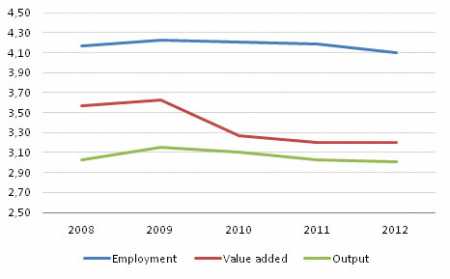|
Sun, 23 Nov, 2014 12:20:19 AM FTimes Report, Nov. 23  Share of industries of culture in the national economy 2008–2012 (ESA 2010). Source: Culture Satellite Accounts, Statistics Finland. The share of the field of culture in the national economy continues to fall despite the rise of the games industry.
Culture has conventionally been a very work-dominated activity. The fields of culture made up good four per cent of all employed persons in the whole national economy in 2012.
According to the Statistics Finland's Culture Satellite Accounts, the methodological revision has decreased the relative share of culture by around 0.1 to 0.2 percentage points in 2008 to 2012.
The games industry is one of the few clearly growing sub-areas of culture, although its significance in the whole cultural economy is not yet that big. Most of the activity of the games industry remains outside the limitations of the cultural satellite, but now separate calculations have been made on the whole games industry.
The employment share of culture is in relative terms clearly higher than its shares of value added and output, which stood at three per cent each, according to the Statistics Finland's Culture Satellite Accounts.
There are several reasons for the labour domination of culture: the employed in the fields of culture are very often working at a relative low pay level and cultural enterprises do not include that many companies that produce large profits. In addition, part-time employment is very common among the employed in several fields of culture.
The employment and GDP shares of culture started to rise when the economic downturn began in the latter part of 2008 and their share grew during the worst year of downturn, 2009.
The share went slightly down again when the national economy showed some signs of recovery in 2010. In 2012, both the employment and value added shares continued to grow, although only a little.
Culture is thus not an actual growth engine except for a few individual fields, but it can be considered an indirect stimulus provider.
Transition to the ESA2010 system is also visible in the cultural satellite.
The now published cultural satellite figures are in accordance with the new ESA2010 system.
For these calculations, the most important individual change was capitalisation of R&D expenditure. The revision has not much effect on the actual cultural satellite calculations, but as the new calculation method raised the level of GDP by around four per cent, the share of culture diminished slightly.
More News
|
|
Finland Times
| Thursday, 25 April, 2024 |

